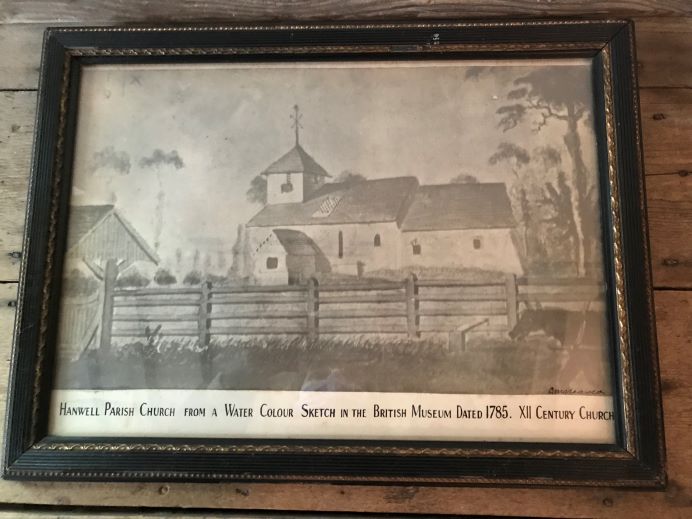Ruth Mercer, Chris and Helen Cosstick from Hanwell St Mary’s Graveyard Survey Group explain the fascinating results of a survey of a church, its churchyard and its crypt. You can find out more during an open weekend they have organised, too.
In 1826, Pigot’s Directory of London described a ‘small and respectable village’ with a ‘very pleasant situation [where the] air is considered exceedingly pure… several families of distinction, sensible of these attractions, have fixed their abode here.’
Believe it or not, the village in question was Hanwell. And, at the centre of the village in 1826 was the church of St Mary, familiar to many readers of Around Ealing as the church by the Bunny Park and Hanwell Zoo.

There has been a church on this spot since before the Domesday Book was completed although the present church is Victorian and was one of the first designs of George Gilbert Scott, consecrated in 1842. The spire above the bell tower is visible for some distance around, dominating the Brent valley below it.
During 2020, the first survey of the churchyard for more than 40 years was undertaken, revealing the history of some interesting earlier residents as well as throwing light upon the history of Hanwell in the 18th and 19th centuries.
Among those buried in the vaults in the crypt of the church is the man who brought the umbrella into common usage in London, Jonas Hanway, as well as General William Edmeston, a hero of the British expansion in 18th Century North America – who was subsequently held captive by the father-in-law of Alexander Hamilton (the star of Hamilton the musical).
In the churchyard is the surprisingly plain tomb of the two daughters of the artist Thomas Gainsborough. But, of course, the churchyard was not just the resting place of the rich and famous, although Hanwell has its fair share of these. Children from the nearby Central London District School, the Cuckoo School as it was known locally, were buried in the churchyard. Local tradesmen and their families and staff from the County Asylum were also buried at St Mary’s until the churchyard was officially closed in 1885.
The earliest surviving stones now date from the early 1700s – and one William Sheppard, citizen and haberdasher, was buried at St Mary’s in 1707. One of the exciting discoveries made during the survey was of a gravestone dating from 1742, beautifully carved, buried deep in the ground. No-one knows why it had been buried – perhaps it had just been ‘lost’ during the subsequent construction of larger churches?

Using a range of documentary sources, we have been able to piece together the history of many of those who were laid to rest in the churchyard and have been able to throw light on the development of Hanwell from the small and respectable village of 1826. But there are also some mysteries – we can only speculate about what really happened to some of those buried in the churchyard.
Hanwell St Mary’s Church and Churchyard Open Weekend
A free open weekend in the summer will give you the chance to learn more about this historic church and its churchyard and the stories of earlier residents of Hanwell. Join members of Hanwell St Mary’s Churchyard Survey Group and other members of the public on Saturday and Sunday 16-17 July, between 2-4pm, at St Mary’s Church.
You can find out more about the survey of the churchyard undertaken in 2020-21 and how it throws light on the development of Hanwell. You will be able to see the crypt, enjoy refreshments, and there will also be children’s activities.





